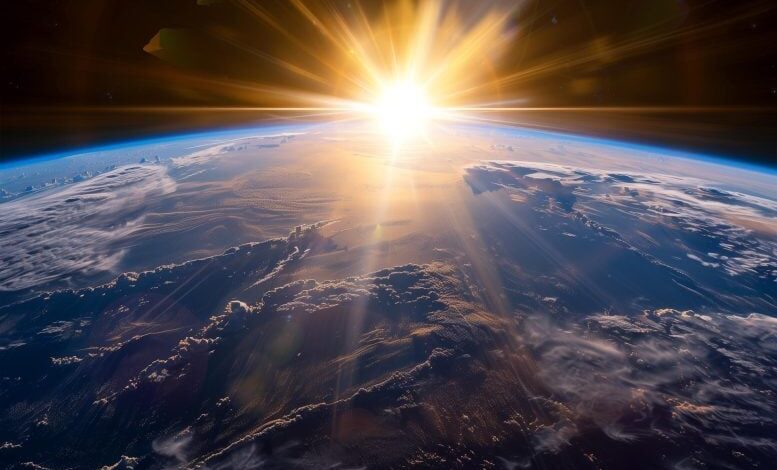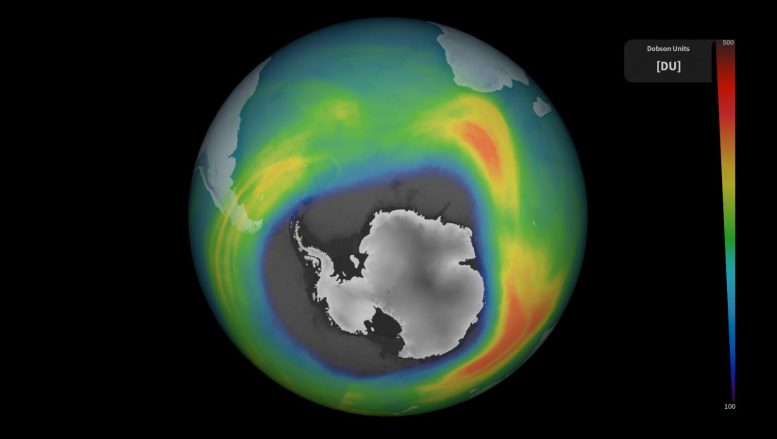Scientific Insights Into a Key Environmental Victory


A recent study published in Nature Climate Change demonstrates a significant decline in atmospheric levels of hydrochlorofluorocarbons (HCFCs), which deplete the ozone layer and contribute to global warming. This progress is a result of the Montreal Protocol, which has successfully regulated the production and use of ozone-depleting substances since 1987.
New research indicates a decline in hydrochlorofluorocarbons (HCFCs) in the atmosphere, confirming the effectiveness of the Montreal Protocol in regulating substances that harm the ozone layer and contribute to global warming.
Significant progress in reducing atmospheric concentrations of chemicals harmful to Earth’s ozone layer has been revealed by a new study. It confirms the success of historic regulations limiting their production.
The findings show for the first time a notable decline in the atmospheric levels of potent ozone-depleting substances (ODS), called hydrochlorofluorocarbons (HCFCs). These HCFCs are also harmful greenhouse gases, so a reduction should also lessen global warming. The study was led by the University of Bristol and published in the journal Nature Climate Change today (June 11).
Achievements Under the Montreal Protocol
The Montreal Protocol was agreed to internationally in 1987 to introduce controls on the production and usage of ODS, which were once widely used in the manufacture of hundreds of products, including refrigerators, aerosol sprays, foams, and packaging.
HCFCs were developed as replacements for chlorofluorocarbons (CFCs). While the production of CFCs has been banned globally since 2010, HCFC production and usage are still being phased out.

This photo shows the high-altitude Integrated Carbon Observation System (ICOS) Jungfraujoch station in Switzerland, which was used to make measurements in this research. Credit: Jungfrau.ch
Ongoing Efforts and Future Outlook
Lead author Dr. Luke Western, Marie Curie Research Fellow at the University’s School of Chemistry, said: “The results are very encouraging. They underscore the great importance of establishing and sticking to international protocols.
“Without the Montreal Protocol, this success would not have been possible, so it’s a resounding endorsement of multilateral commitments to combat stratospheric ozone depletion, with additional benefits in tackling human-induced climate change.”

Measurements from the Copernicus Sentinel-5P satellite show 2023’s ozone hole over the Antarctic. Credit: Contains modified Copernicus Sentinel data (2023)/processed by DLR
Impact on Climate Change and Protocol Success
The international study shows the total amount of ozone-depleting chlorine contained in all HCFCs peaked in 2021. Because these compounds are also potent greenhouse gases, their contribution to climate change also peaked in that year. This maximum occurred five years before the most recent predictions. Although the drop between 2021 and 2023 was less than 1%, it still shows HCFC emissions are heading in the right direction.
Dr. Western said: “Their production is currently being phased out globally, with a completion date slated for 2040. In turn, these HCFCs are being replaced by non-ozone-depleting hydrofluorocarbons (HFCs) and other compounds. By enforcing strict controls and promoting the adoption of ozone-friendly alternatives, the protocol has successfully curbed the release and levels of HCFCs into the atmosphere.”
Advancements in Measurement and Environmental Monitoring
The results rely on high-precision measurements at globally distributed atmospheric observatories, using data from the Advanced Global Atmospheric Gases Experiment (AGAGE) and the National Atmospheric and Oceanic Administration (NOAA).
“We use highly sensitive measurement techniques and thorough protocols to ensure the reliability of these observations,” said co-author Dr. Martin Vollmer, an atmospheric scientist at the Swiss Federal Laboratories for Materials Science and Technology (EMPA).
Co-author Dr. Isaac Vimont, a research scientist at the NOAA in the United States, added: “This study highlights the critical need to be vigilant and proactive in our environmental monitoring, ensuring other controlled ozone-depleting and greenhouse gases follow a similar trend which will help to protect the planet for future generations.”
Reference: “Global Reduction in Harmful Greenhouse Gases and Ozone-Depleting Substances: Success of Montreal Protocol Confirmed” 11 June 2024, Nature Climate Change.



